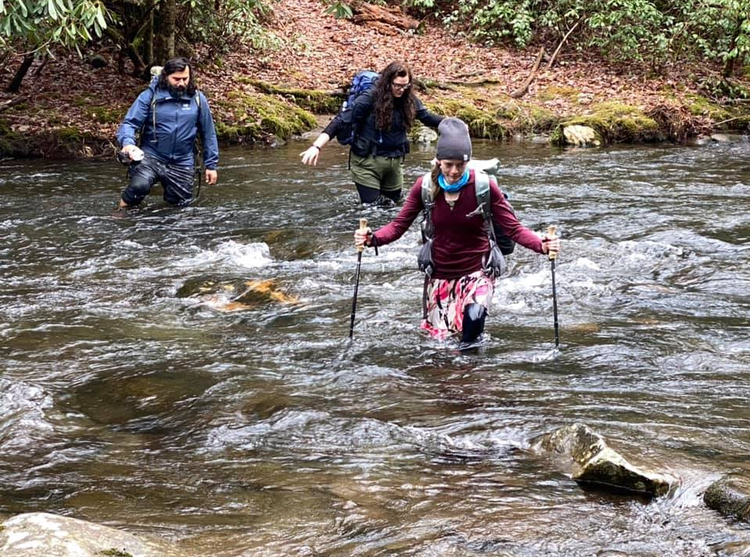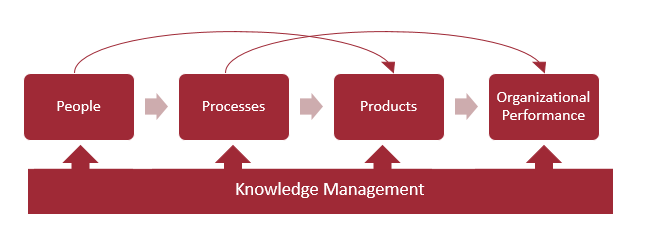I’ve been a casual hiker most of my life, so I never considered how learning more about the activity could impact my experience.
However, when I decided to take on a challenge called the Smokies 900 -- which involves hiking every trail in Great Smoky Mountains National Park (roughly 900 miles) -- I found myself perusing online hiking discussion boards, following local hikers on social media, and talking to people I met in hiking groups about their own experiences with the challenge. Through this vicarious learning, I began improving my outdoor adventures and covering higher daily mileage.
The stories, trail tips, photos, and other content I picked up from fellow hikers made me decide to switch up my footwear to non-waterproof trail runners that could drain more easily on hikes with several river crossings.
I also added electrolytes to my water bottle to get some extra pep in my step on hot, humid days. I plotted which trails to hike based on crowds, traffic, weather, wildflower seasons, and various other tidbits I picked up on from others familiar with the park.

Vicarious learning is a critical tool for both personal and professional lives. Through vicarious learning from other Smoky Mountain hikers, I had the gear and grit for Eagle Creek Trail’s 15+ water crossings. Image source: Author
Vicarious learning is a strategy we start practicing from the moment we’re born and look to our caregivers for cues on how to journey through a brave new world. We continue to use it throughout our personal and professional lives. This natural inclination is also an approach small businesses can leverage to boost performance and staff satisfaction.
Overview: What is vicarious learning?
Vicarious learning is a process where people learn through indirect sources, such as hearing or seeing something happen, empathizing with another person’s story, or reading about how another company dealt with a challenge. This is in contrast to hands-on learning where people receive direct instruction on a specific topic.
Vicarious observation allows us to process our environment in a way that teaches us how to respond to similar events. We see or hear how another person handles a situation and remember that when we face the same scenario.
However, this vicarious conditioning is slightly different from observational learning. The main contrast between vicarious conditioning vs. observational learning is that observational learning requires visual teaching that focuses on a clear objective by working through a live or recorded situation.
On the other hand, vicarious learning can use many different senses and learning styles and is centered around gaining experience from other people’s experiences.
Examples of vicarious learning
It’s likely you encounter vicarious learning in your day-to-day experiences without even realizing it. Common vicarious learning examples occur in both professional and personal environments.
1. Reading a story about someone’s experience
Reading memoirs is a form of vicarious learning. By reading someone else’s life story, you can pick up lessons on how they overcame various challenges to get to where they are today. By internalizing some of the wisdom they gained, you learn how to cope with similar situations should they arise in your own life.
From a more business-oriented perspective, you could read how companies addressed staff retention issues or lowered their product defect rates. Reading stories of how other businesses work helps you understand how you can manage your own business.
2. Observing a colleague interact with a new customer
Let’s say it’s your first day on the sales floor of a local bookstore. A customer comes over and asks your colleague if you have a certain book in stock. You watch as your colleague looks up the book in your store’s inventory database. When she learns that your store is currently out of stock for that title, you listen as she explains to the customer how she can order it, how long it will take to arrive, and how much she appreciates the customer supporting independent bookstores.
Through both hearing and watching your colleague, you’re vicariously learning how to interact with future customers and place orders for books currently out of stock.
3. Watching a video on a relevant topic
Today’s internet is filled with how-to videos on just about every topic under the sun. People with specific skills can create short tutorials showcasing how they complete different tasks and sharing their tips and tricks for doing so efficiently and effectively.
Watching these videos is an example of vicarious learning because you’re observing someone else’s experience with a task that is less familiar to you. Perhaps you recently jumped on the charcuterie board craze and now, thanks to various meat and cheese influencers on the web, you’ve vicariously learned how to perfectly display your chosen finger foods on a tasteful olivewood board. This is vicarious learning at its best.
4. Attending a board meeting
Being present at board meetings or other company presentations that are outside of your normal day-to-day responsibilities is another way to experience vicarious learning.
This can be particularly useful for interns who join organizations to learn as much as they can about career opportunities within that field. While they may not be at that executive level in their job search currently, they can learn a lot about how companies work and what senior-level staff roles look like by attending and observing these events.
5. Talking with a customer about their experience
Vicarious learning doesn’t only happen within organizations. There are also examples of vicarious learning from external sources that relate to your company. Using the previous scenario of the independent bookstore, let’s say that same customer comes back later to pick up the book they ordered.
You ask them how their experience was with that process and they give you some feedback on how they were confused when the book would actually show up and stopped by a couple of times because they never received a call about it.
In this scenario, by listening to the customer, you’re learning what it’s like to be on their end of the transaction, which can help you better understand how you can improve things on the business side.
How to implement vicarious learning in your business
While it may seem like vicarious learning just happens, there are many ways small businesses can foster a work environment that is proactive when it comes to vicarious learning. Through specific steps, you can ensure your staff make the time and space to learn from each other.
1. Offer opportunities to shadow different roles
Organizations across sectors should be aware of the proverbial silo. It’s easy for employees to get slotted into a specific role and lose sight of how their work fits into the larger picture. Your business can promote a culture of vicarious learning by offering opportunities for staff from all levels to shadow different positions within your company.
Senior-level staff can learn about how entry-level staff are working and what their ideas are for process improvement. Human resources staff can shadow project staff to learn more about how the company’s culture plays out in real-time.
2. Develop a knowledge management system
Creating a database within your organization for peer-to-peer learning is an easy way to put vicarious learning at the center of what you do. As employees learn about new processes, publish work that informs your business’s goals, or give presentations on productivity tips, save these materials in a knowledge management system so future employees can continue to benefit from them.
This acts as your business’s own internal library of highly relevant resources from which everyone can learn.

Knowledge management is the act of collecting what your employees learn about your company’s culture, processes, products, and performance, and making that information readily available to your full team. Image source: Author
3. Establish communities of practice
A great way to both encourage employee engagement and implement vicarious learning opportunities in your organization is by establishing communities of practice.
Communities of practice are groups of employees who share a similar interest in a particular topic or skill and gather periodically to learn from one another about how to deepen their expertise in that area. It’s a chance to both connect as colleagues and learn new things.
For example, let’s say you run a small consulting firm. A dozen or so employees have a strong interest in design and communication strategies. They form a community of practice to learn from one another about the latest best practices for creating infographics, how to use different types of design software, techniques for building adult learning modules, and other related skills. Through this vicarious learning, they’re then able to deliver more polished reports to your clients.
4. Create a mentorship program
Training and development comes in many forms. New employees typically get a crash course on their roles with their new companies and have employee handbooks to which they can refer. They also learn a lot from hands-on tasks, getting the feel for their workflow. However, vicarious modeling is a way to better personalize this introduction to your company and encourage continued learning after that orientation phase has worn off.
Creating a mentorship program within your organization weaves vicarious learning into ongoing employee relationships. As newer staff have questions, they have someone they can turn to for advice. They can learn from that mentor’s experience how to integrate into your company’s culture, seek out the work opportunities they’ll contribute to best, and deepen their knowledge of the field.
5. Reinforce vicarious learning through recognition
To ensure your vicarious learning efforts flourish and become a natural, ongoing part of your business’s culture, it’s important to reinforce these events as they arise.
An example of vicarious reinforcement would be if a new employee volunteered to give a lunchtime skill-sharing presentation because he’d seen his colleague praised for her valuable presentation the previous month and wanted to add to that learning culture.
Make sure to recognize your employees’ efforts as they share their knowledge and skills to reinforce a workplace culture around vicarious learning.
Use vicarious learning to improve the operations and employee satisfaction of your small business
Vicarious learning helps everyone succeed. It can uncover parts of your operations that need improvement, increase your employee retention rates through higher job satisfaction, and encourage staff curiosity that leads to innovation.
Whether in the office or on the trail, vicarious learning elevates the experiences of others to create successful outcomes for similar future scenarios.
Our Small Business Expert
We're firm believers in the Golden Rule, which is why editorial opinions are ours alone and have not been previously reviewed, approved, or endorsed by included advertisers. The Ascent does not cover all offers on the market. Editorial content from The Ascent is separate from The Motley Fool editorial content and is created by a different analyst team.